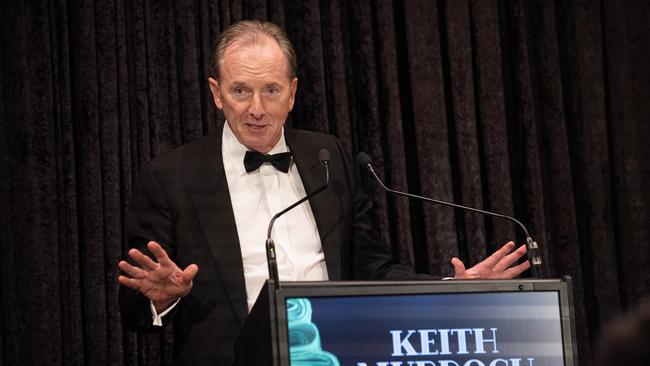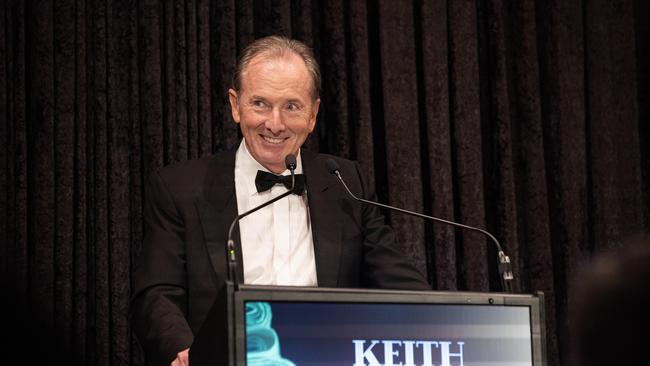
Gorman oversaw the rebuilding of his Wall Street bank in the years following the global financial crisis, so it is now the fourth-biggest bank in the US. He has sat on the advisory board of the US Federal Reserve and is on the board of the New York Federal Reserve.
He also had a front-row seat in recent weeks to a new US banking crisis, spurred on by the collapse of Silicon Valley Bank.
Gorman almost didn’t make the trip to his hometown in Melbourne, over the weekend he was still working through US banking strains that are still being felt and fallout from the emergency rescue of investment bank Credit Suisse, a globally significantly important bank.
In a speech given at the State Library Victoria, the Australian banking boss, who is one of the most powerful figures on Wall Street, Gorman mapped out his view about how to make banks safer. He has some experience, he helped oversee the rebuilding of one of Wall Street’s biggest banks in the years following the global financial crisis. He has also sat on the advisory board of the New York Federal Reserve.
Delivering the Keith Murdoch Oration, Gorman framed his speech around why do bank crisis keep happening?
The timing was significant. It comes just weeks after the collapse of two US banks, including Silicon Valley Bank and in Europe the emergency merger of globally significantly important bank Credit Suisse with long-time rival Swiss bank UBS.
Gorman points out banks are sitting on significant amounts of money and by their nature are highly leveraged. But this means small mistakes can be “catastrophic” – the equivalent of a financial bomb going off.
Here, the lessens were learnt the hard way. During the GFC, one small area of Morgan Stanley lost $U10bn ($A14.80bn) on a single trade.
“It took us 75 years to accumulate $US32bn in capital (at Morgan Stanley) and a trading team of 11 people lost $US10bn of it in a matter of weeks,” Gorman says. A third of the Wall Street bank’s capital was wiped out.

There were others from the trader Nick Leeson who destroyed the 200-year-old Bearings Bank and billions of rogue trading losses at France’s Societie Generale. And losses that caused the implosion of Lehman Brothers.
To counter this, Gorman says, is to limit the impact of what are inevitably terrible decisions that creep into some of these places. He calls it the “sandbox theory” and, like in a children’s playground, putting around risk but creating many small activity areas to keep things safe.
“My mantra is no team, no client, no trade can cost us more than half of 1 per cent of capital”. So for Morgan Stanley today that is $US450m – a safer bet than the third that was lost in 2008.
For Gorman, CEO oversight in banks is also critical. They are the ones that can make or break the bank.
“A wise man once said some people grow the power and some people slow,” he says. “Bank CEOs, they can do more damage to their company than pretty much any other industry”.
Gorman points out, if you run a bank at 30 times leverage, and you lose 3 per cent of it, you wipe it out. One way to manage this dynamic is to align compensation with the risks, so the bank is managed over the longer term. The bulk of bonus and pay is released over many years. This also puts a break on acquisition just for the sake of getting bigger.
Everybody wants to get bigger without considering strategic cultural and integration requirements. This, he says, is a recipe for failure.
When it comes to regulation, all banks – not just the big ones – should go through annual stress tests, he says. It should be extremely demanding, and bank supervisors need to be confident and need to be compensated for the well for the highly risky organisations they oversee.
On boards, bank directors and CEOs of course must be competent, but also collaborative.
Here, competency means that each director is an obvious “go to” expert on whatever the issue is before the board. Every bank director should also be able to express strongly held views without being judged.
Fundamentally, though, the board has two jobs, Gorman says. This is managing the CEO and then overseeing everything else. The first is much, much more important than everything else.
Even with all the changes, “banks sometimes will still fail” but by limiting the potential damages it is much less likely to be a systemic hit to the economy.
Banks enjoy a symbiotic relationship with society by taking deposits and putting them to productive use as loans. This all works well until the system breaks down.
johnstone@theaustralian.com.au






Morgan Stanley global chief executive James Gorman has some experience with what happens when banks go bad.